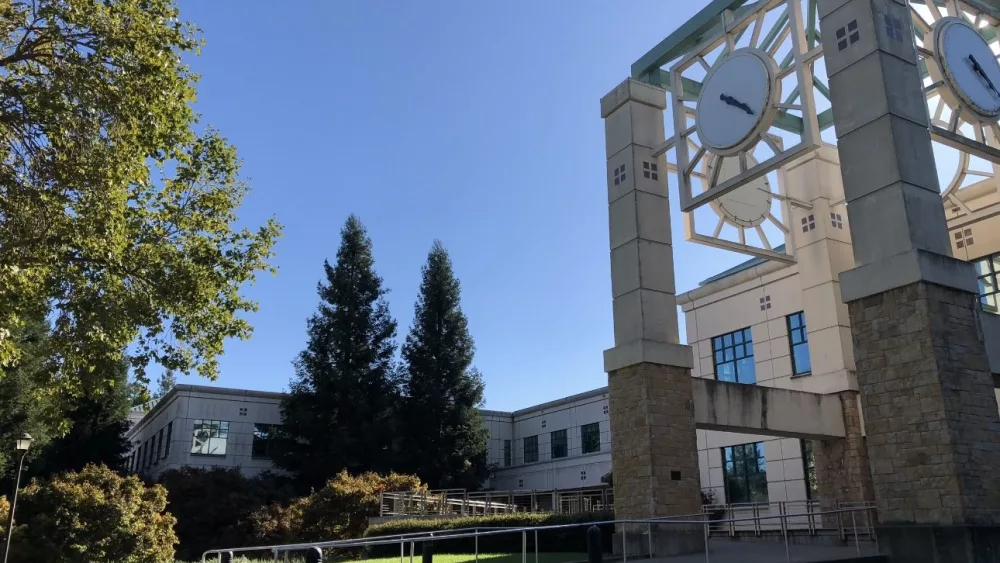We trusted in our political leadership’s claims that the Sonoma-Marin Area Rail Transit (SMART) would reduce our congested highways, eliminate unnecessary greenhouse gases and be a spectacular and popular new mode of transportation. You’ve no doubt seen these beautiful trains as they travel alongside Highway 101. They are gorgeous indeed, Japanese-engineered with powerful diesel engines to run smoothly from Santa Rosa to the nearby Larkspur Ferry Building. What’s more, the SMART operation is staffed by more than 200 employees dedicated to rider safety, convenience and care.
But are you a regular rider of SMART? Very few of us are. Our politicians successfully redirected more than $300 million in state and federal funds, borrowed hundreds of millions more on the backs of folks like you and me, and seek to annually qualify for $6 million from state-collected tax receipts to operate SMART. What we’re now learning, regrettably, is that none of these funds has been enough. SMART’s leadership has now determined that the 20 year, quarter-cent sales tax increase Sonoma and Marin voters agreed to in 2008 must now be extended an additional 30 years. You’ll vote on this issue March 3. The goal is to extract an additional $2 billion-plus in Sonoma and Marin taxpayer money against SMART’s bond indebtedness. Its stated purpose is to service debt—loads and loads of debt.
We’ve all seen this before; a well-intended government project needs more money to operate than was originally estimated. Promised annual operating costs of $16 million have now ballooned to $41 million, a typical bureaucrat slight of hand. But what’s equally concerning is how infrequently this expensive service is used by our community. Has our population always been too small to support such a project? SMART reported in a news release on January 5 that it was “pleased” with its growth and that ridership is “robust and growing.”
Here’s what I’d like to know: Compared to what?
Throughout 2018, SMART averaged less than 15 riders per hour—the third worst ridership statistic among all 26 commuter lines in the United States. While other rail lines average 20 million riders per year, SMART had fewer than 500,000 riders between January and September last year. That´s the volume that a small fleet of luxury buses could have otherwise handled and is less than 4 percent of the average annual ridership of every single other U.S. commuter rail. Here’s how SMART ranks in several other areas, according to the National Transit Database.
First, it ranks worst-in-the-nation in taxpayer subsidy per rider. (In other words, non-users of SMART pay a greater percentage of the ticket costs than anywhere else in the nation.) Second, it ranks as worst-in-the-nation in "fare box" recovery (i.e. that portion of the train’s operating expenses met by the fares of actual riders). And finally, it’s worst-in-the-nation in operating cost per passenger.
Public subsidy for ambitious projects is both noble and appropriate. As you head to the ballot box on March 3, keep in mind that non-users of SMART pay more than 90 percent of its expense. I don’t see this changing anytime soon. Will you vote to approve an additional 30-year tax commitment to ensure SMART ridership?
Novato councilman and SMART advocate Eric Lucan plans to vote “yes.” He points out the passenger-count since inception totals 1.6 million, including 5,700 with a wheelchair and 150,000 with a bicycle. He’s encouraged by SMART’s new schedule and access to Novato and the Larkspur Ferry. "The future looks bright," says Lucan.
Critics of the sales tax extension have also done their homework. “With a 90 percent subsidy baked into SMART’s own projections, it’s obvious they have no intention of becoming more efficient through increased ridership,” claims Komron Shahhosseini, a Poppy Bank board member, a Sonoma County planning commissioner, and a board member of Burbank Housing and the Redwood Empire Food Bank. He adds, "If SMART has a plan that won’t burden 1,000 people with a tax for every two people who actually use the train, then maybe I’d support it!" Komron calculates that every Marin and Sonoma home will pay an extra $8,000 in sales taxes, if the SMART tax is extended.
We have elections every two years to make informed decisions based on facts, figures and historical data. We have elections so voters can make a collective decision and be heard. Why vote on extending a 30-year tax that won’t go into effect until 2029? Why not spend the next two years validating SMART’s true benefit before socking all of us with an additional 30-year commitment? Voters have done their share; I believe it’s time for SMART’s leadership to do its share. Convince me. Show me the benefits, and I’ll be a believer, too.
How are you voting March 3? Your thoughts are always appreciated. Stay in touch at Lawrence@Northbaybiz.com
Author
-

Lawrence Amaturo is the publisher of NorthBay biz magazine. In addition to the magazine, Amaturo Sonoma Media Group is owner/operator of Waterdrop Digital Media and eight radio stations serving the North Bay region: KZST, KSRO, Froggy 92.9, 97.7 The River, Hot 101.7, and The Wolf 102.7. Lawrence and his wife, Susan, a local physician, are active in several philanthropic endeavors, and enjoy golfing, skiing and traveling with their adult daughters.
View all posts




